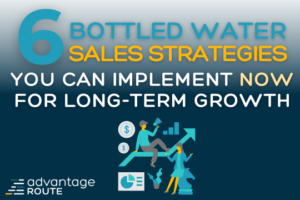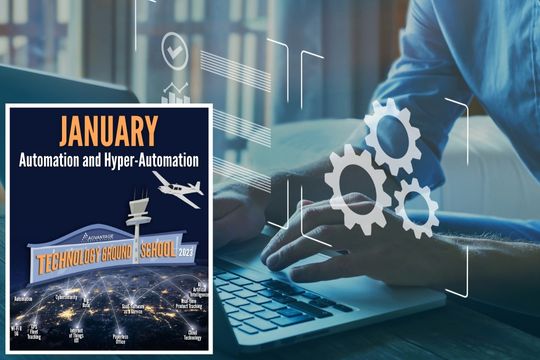
Are you a customer? Access your all-new portal by clicking here to login.

Do you know the difference between Automation and Hyper-automation, or even what these terms mean?
In Technology Ground School this year, we will begin to introduce, break-down, and explain new technology concepts that are woven into our lives and businesses. Our Technology Ground School is planning on keeping you informed on new terminology every month. We hope that this knowledge will skyrocket your business by utilizing the tools and technology that are available.
Let’s break down automation first. In this article, automation is referred to as a built-in process within a computer. Automation that may be done by a robot or sorting machine in a warehouse is called RPA (Robotic Process Automation.) RPA is a software technology that makes it easy to build, deploy and manage software “robots” that mimic human actions or business processes with digital software and systems. This reduces human intervention in processes.
Are you wondering why this would be helpful to you and your organization?
It comes down to the ability to complete processes faster, more efficiently, with higher accuracy. On a business level, this contributes to increased productivity, lower risk, and costs. An example of this is Mango Processes, a module within the Route Manager Software. Now, onto automation’s more advanced counterpart: hyper-automation.
This concept was coined in Gartner’s Strategic Technology Trends for 2020. (https://www.gartner.com/smarterwithgartner/gartner-top-10-strategic-technology-trends-for-2020)
As automation uses technology to develop tasks that once required humans, hyper-automation deals with the application of advanced technologies. This includes artificial intelligence (AI), robotic process automation (RPA), intelligent business management software (iBPMS) and machine learning (ML) to automate processes and augment humans.
Hyper-automation is an expansion of automation, adding a layer of advanced technology that makes it accessible to have more functionality. Implementing hyper-automation requires a strategic approach and the right tools to deliver value.
Now that you know the difference between the two, we want to bring the focus back onto RPA. It is a feature that you can integrate immediately and drastically change the way your business runs its day-to-day activities.
The 5 biggest benefits of RPA include:
Are you wondering how an RPA system can fit into the workflows of your organization? Here are some popular real-world examples of RPA in the departments of a business like yours.
Did you know that within Route Manager you can automate processes? With Mango Processes (https://advantageroute.com/process-automation/) you can automate the tasks that you regularly perform in RMA such as preparing sales reports and closing the month. Whether you need to complete a simple task, or a series of complex tasks, Mango Processing will ensure that each process is done correctly and on time. Simply set up the scripts to do your work for you. For example, the program can perform tasks such as printing pre-route reports every morning or posting transactions and closing the month. Implementing automation will save your team dozens of hours per week. Reach out to our team if you are interested in learning more.

Copyright © 2025 – All Rights Reserved – CLICK HERE to review our company privacy policy.